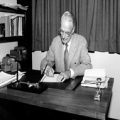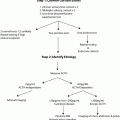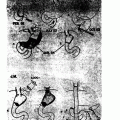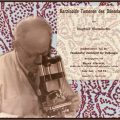Fredrick Grant Banting. (Courtesy of Banting House National Historic Site of Canada)
On August 27, 1923, the cover of Time magazine featured Dr. Fredrick Grant Banting , the man responsible for the discovery of insulin (Fig. 1). He and J. J. R. MacLeod were later that year awarded the Nobel Prize in Physiology or Medicine. The story of the discovery of insulin is filled with controversy, drama, academic bickering, and the excitement and reward that come with making an impact in the lives of millions of patients suffering from the then fatal disease, diabetes . For most, the discovery of insulin is credited to this bright young surgeon and the medical student assigned to assist him in the laboratory in the summer of 1921, Charles Best. Yet the discovery and purification of an insulin extract involved a team effort, one shared with J. J. R. McLeod, C. H. Best, and J. B. Collip .


Fig. 1
Cover of Time magazine of Fredrick G. Banting, the man responsible for the discovery of insulin. August 1923. (Courtesy of Banting House National Historic Site of Canada)
Fredrick Grant Banting was born on November 14, 1891, at the family farmhouse in Alliston, ON, Canada. Banting was the son of a rural farmer, William Thompson Banting, and his wife Margaret Grant. Fred or Freddie as he was called was the youngest of six children. William Banting was a hardworking and progressive farmer in the community. He diversified the 100-acre farm to raise livestock, fruits, grains, and vegetables. The Bantings were considered well-off, and Fred enjoyed a comfortable boyhood on the farm [1, 2]. He was a shy and unsocial boy, who struggled to make passing grades in the early years of grammar school. As Fred developed into a young man, his aspirations beyond middle school were set high compared to most rural farm boys. His father offered each of his sons a gift when they turned 21 that they could use any way they saw fit. The gift consisted of $ 1500, a horse, harness, and buggy [1]. Although his older brothers all spent their gift helping to establish themselves as farmers, Fred spent his on university education.
In 1910, Banting enrolled in general arts at Victoria College at the University of Toronto. He failed to successfully complete all of his first-year courses (failing French) and was denied entrance into the second year. He returned to Victoria College to repeat his first year in 1911 having at some point decided on becoming a doctor. Admission into medical school required successful completion of first-year university. Banting petitioned the university’s senate to be allowed to enter medicine in February 1912. His petition was granted on the condition he completed his missing arts course during his medical school training. Although he struggled to complete the last art course to meet the first year’s requirements, his marks in medicine were significantly better. He was considered slightly above average in his medical school class.
On August 4, 1914, Canada entered the Great War. It was the following day that Banting tried to enlist in the army, but was refused due to poor eyesight. Following his third year in medicine, he tried again and was now accepted in the Canadian Army Medical Service. He was soon promoted to sergeant, spending the summer of 1915 in a military training camp in Niagara Falls, ON. After completion of his fourth year, the University of Toronto condensed the fifth year of medical school into a special summer session in order to speed up the training of the much-needed army doctors. Sometime during this period, Banting decided on surgery as his specialty. He was fortunate to have trained as a fifth-year medical student under C. L. Starr, an orthopedic surgeon at Toronto Hospital for Sick Children. Banting’s medical class of 1917 finished their final exams in October 1916, graduated on December 9, and on December 10, 1916, all able-bodied members of his class reported for military duty [1]. He was promoted to lieutenant and left for Britain in March 1917. Starr, who by then was posted abroad at the Granville Canadian Special Hospital in Britain, requested young Banting be assigned to assist him. Banting worked with Starr for the next 18 months before being transferred to France in June 1918 [1, 2]. Captain Banting was injured near the front lines by a piece of shrapnel to his forearm for which he was awarded the Military Cross. Banting was discharged from the army in July 1919, returning to Toronto Hospital for Sick Children to complete his surgical training [1–3].
Much to Banting’s disappointment upon completing his surgical training, he was not given a consulting position in Toronto. So in June 1920, he headed for London, ON, to start up his own surgical practice [4]. The house on Adelaide Street that served as his home and office now houses the Banting Museum. Banting became a lecturer at the University of Western while he struggled to establish his surgical practice. In November 1920, he was scheduled to give a lecture to the medical students on the function of the pancreas. Little was known at that time about the pancreas except that it made digestive juices, and when experimentally removed from dogs, the symptoms of the metabolic disorder, called diabetes , developed.
In preparation for this talk, Banting read the recently published article by M. Barron entitled “The Relation of the Islets of Langerhans to Diabetes with Special Reference to Cases of Pancreatic Lithiasis” [1, 6]. Barron observed that blockage of the pancreatic duct resulted in atrophy of the acinar cells with preservation of the islets. This observation along with others supported the hypothesis, put forth by many, that some internal secretion from the islets was responsible for the prevention of diabetes . In his notebook from that night, Banting conceived the idea for his landmark experiments writing:
Ligate pancreatic ducts of dogs. Keep dogs alive till acini degenerate leaving Islets. Try to isolate the internal secretion of these to relieve glycosuria. [1]
Banting was encouraged by several faculty members at Western to consult with a leading expert in carbohydrate metabolism J. J. R. MacLeod, the professor of physiology at the University of Toronto, about his idea. Records indicate that their first meeting did not go well. Banting was poorly prepared, knowing very little about diabetes or experimental design. MacLeod soon realized that Banting was very much a novice when it came to research yet recognized that his idea had some merit. MacLeod cautioned Banting that success was unlikely, as many far more experienced researchers had failed thus far, yet negative results would still be of value. MacLeod also told him that a substantial commitment from Banting himself would be required for MacLeod to provide the laboratory facilities required for this project [1, 2, 5, 6]. Banting returned to London to reflect upon the offer by MacLeod.
Stay updated, free articles. Join our Telegram channel

Full access? Get Clinical Tree







